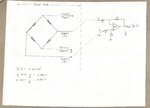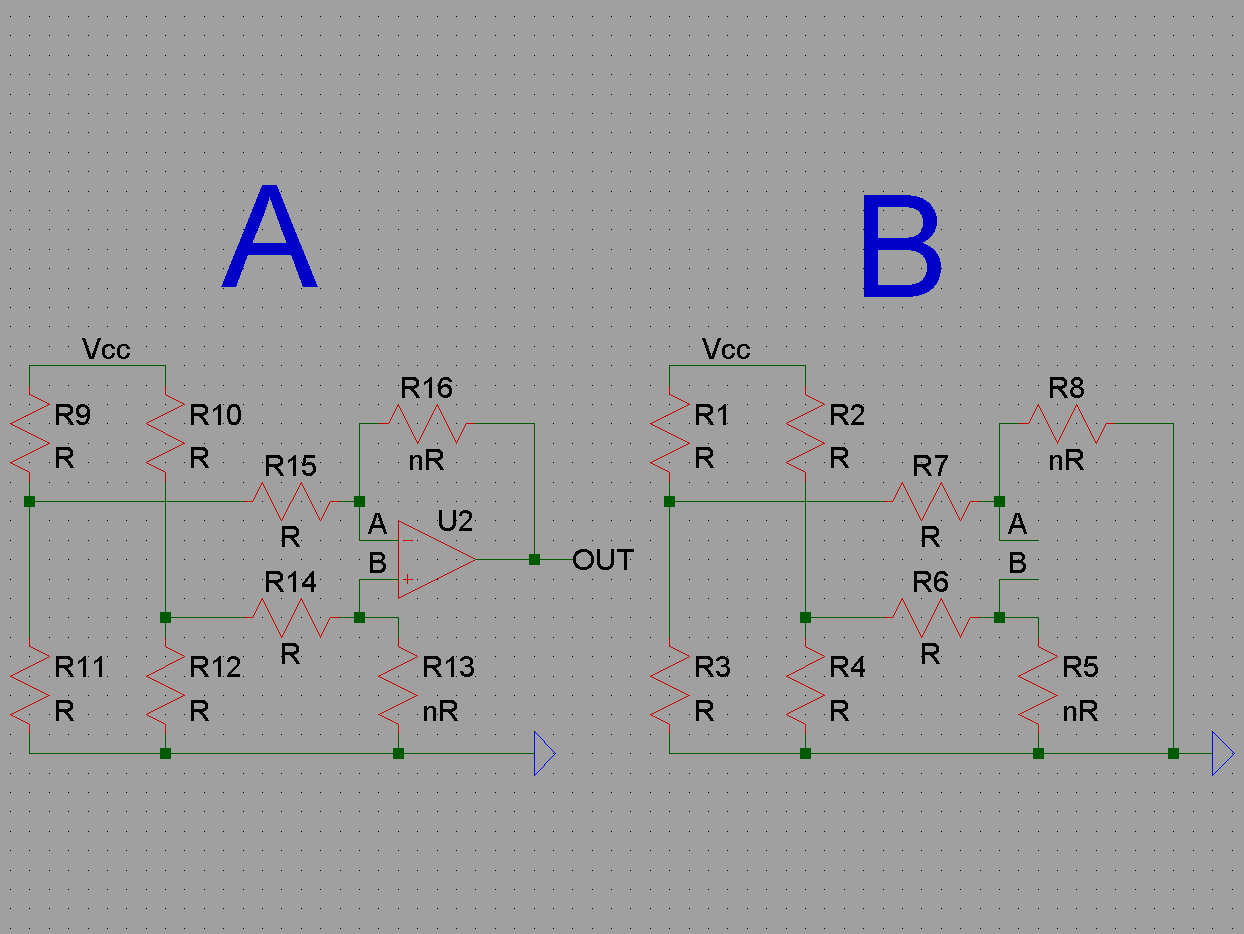rahulpsharma
Junior Member level 2

Hello I've uploaded a circuit and I request some help on this circuit...
The sensor part: The Sensor part requires +5V DC between Input + & Input - Terminals... So I fed it with a SMPS... +ve of SMPS goes to Input + and Ground of SMPS goes to Input -....
Under no load conditions voltage between Output + & Output - leads, reads as 0.220 mV... As I keep loading the sensor, the voltage between Output + & Output - leads keeps increasing linearly till approx 6 mV...
Now I wanted to convert this Output + & Output - to a single ended Output Vo, which can be measured with respect to one single ground, and then fed to another amplifier circuit, which I want to further digitize and do something...!!
So, I tied Output + to Positive Input and Output - to the Negative Input of of Differential Amplifier (Picture Attached), hoping to get a Vo which will be 0.220mV w.r.t to the Ground (Input -)... But my differential amplifier gives an output of 4.75V... I am lost..!!
I would request help my circuit...
Thanks and regards
The sensor part: The Sensor part requires +5V DC between Input + & Input - Terminals... So I fed it with a SMPS... +ve of SMPS goes to Input + and Ground of SMPS goes to Input -....
Under no load conditions voltage between Output + & Output - leads, reads as 0.220 mV... As I keep loading the sensor, the voltage between Output + & Output - leads keeps increasing linearly till approx 6 mV...
Now I wanted to convert this Output + & Output - to a single ended Output Vo, which can be measured with respect to one single ground, and then fed to another amplifier circuit, which I want to further digitize and do something...!!
So, I tied Output + to Positive Input and Output - to the Negative Input of of Differential Amplifier (Picture Attached), hoping to get a Vo which will be 0.220mV w.r.t to the Ground (Input -)... But my differential amplifier gives an output of 4.75V... I am lost..!!
I would request help my circuit...
Thanks and regards






